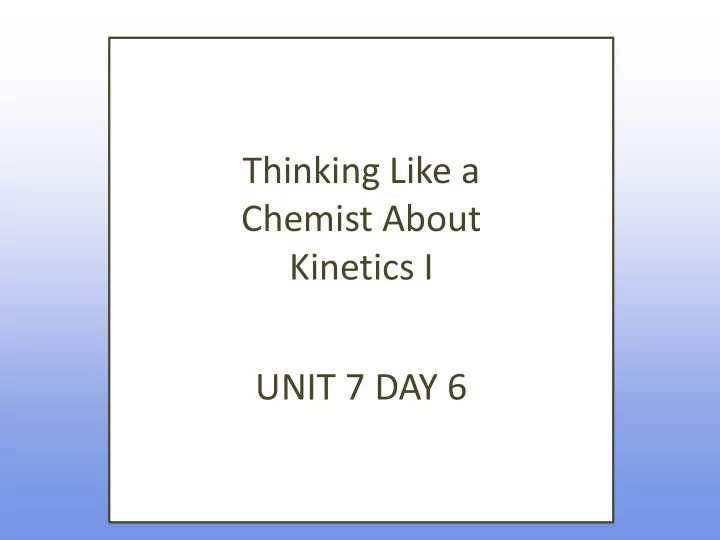

Thinking Like a Chemist About Kinetics I UNIT 7 DAY 6
What are we going to learn today? Reaction Rates and the Rate Law Method of Initial Rates
Quiz: Clicker Question Hydrogen-3 (tritium, H-3) is sometimes formed in the primary coolant water of a nuclear reactor. Tritium is a beta emitter with a t 1/2 = 12. 3 years. For a given sample containing tritium, after how many years will only about 12% of the sample remain? A) 12.3 years B) 24.6 years C) 36.9 years D) 49.2 years E) 61.5 years
Kinetics Kinetics is about how fast chemical reactions occur. Measuring the rates of reactions (macroscopic) gives us insight into the way reactions are actually happening (microscopic) START ACTIVITY!
Average, Instantaneous, Initial, Reaction Rate 2NO 2 (g) 2NO(g) + O 2 (g) Check in
Kinetics Imagine the following reaction CH 3 Cl + OH - CH 3 OH + Cl - Macroscopic Microscopic -d[CH 3 Cl] - ∆[CH 3 Cl] k[CH 3 Cl][OH - ] = RATE = = ∆t dt Tells us about “how” Measured in lab The reaction occurs Check at end of activity
Similar but different reaction: Imagine the following reaction (CH 3 ) 3 CBr + OH - (CH 3 ) 3 COH + Br - Macroscopic Microscopic -d[(CH3) 3 CBr] - ∆[(CH 3 ) 3 CBr] k[(CH 3 ) 3 Br] x [OH - ] y = RATE = = ∆t dt Tells us about “how” Measured in lab The reaction occurs
Learning Outcomes Understand the concept of rate of change associated with chemical change, recognizing that the rate of change for a chemical reaction can be determined by experimentally by monitoring the change in concentration of a reactant or product with time. Be able to identify the reaction order for a chemical change. Apply integrated rate equations to solve for the concentration of chemical species during a reaction of different orders
IMPORTANT INFORMATION LM27 & LM28
Recommend
More recommend